American Kestrels are colorful little falcons most commonly found in grasslands and meadows. At only 8-12 inches long, they are the smallest falcons in North America. Sadly, their numbers are in sharp decline nationally (88% decline in New England since 1966) which is why it is very special that this local pair added seven offspring to the population this year. They also proved kestrels can thrive in an urban environment – nesting in a vent in a concrete wall at a junk yard.
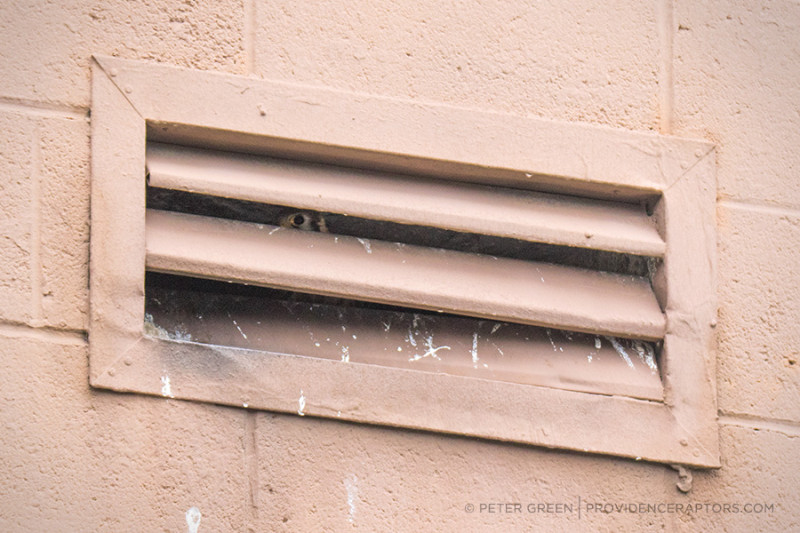
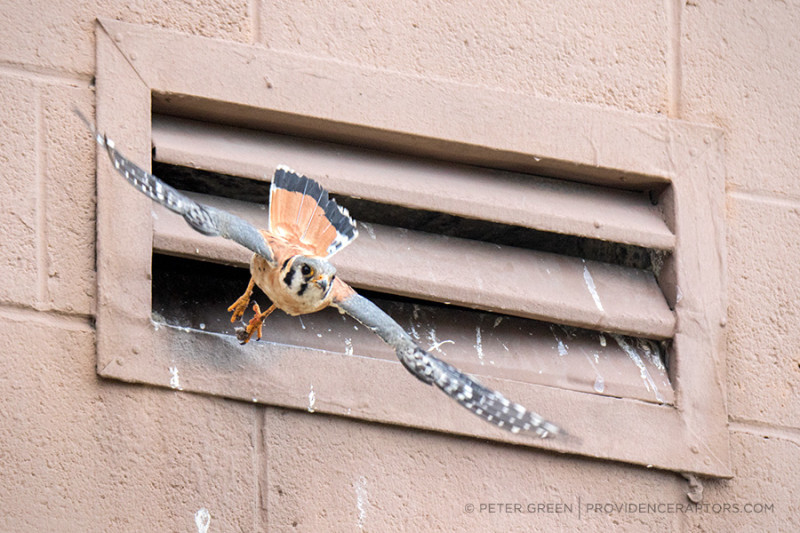
Most raptors (including kestrels) raise a single brood per year due to the time and effort required for success (incubation period 26–32 days, nestling period 28–31 days, followed by weeks of training to fly and hunt). If a clutch (eggs) or brood (nestlings) is lost early in the season, the adults may try again if there is enough time. Producing two successful, successive broods in a single season is extremely rare and will only happen if the female is feeling very fertile and food is abundant.
Here’s how the story unfolded this summer in Providence:
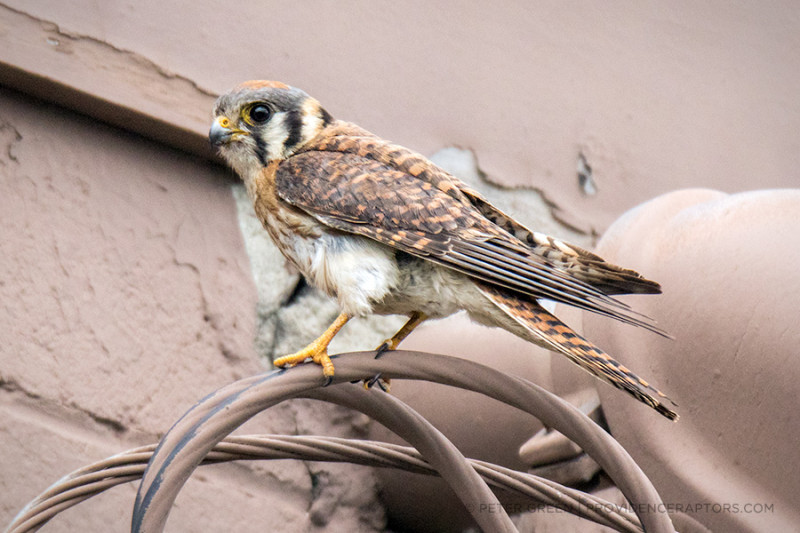
Above is mom and below is a female fledgling. Females have rusty/red wings and striped tails.
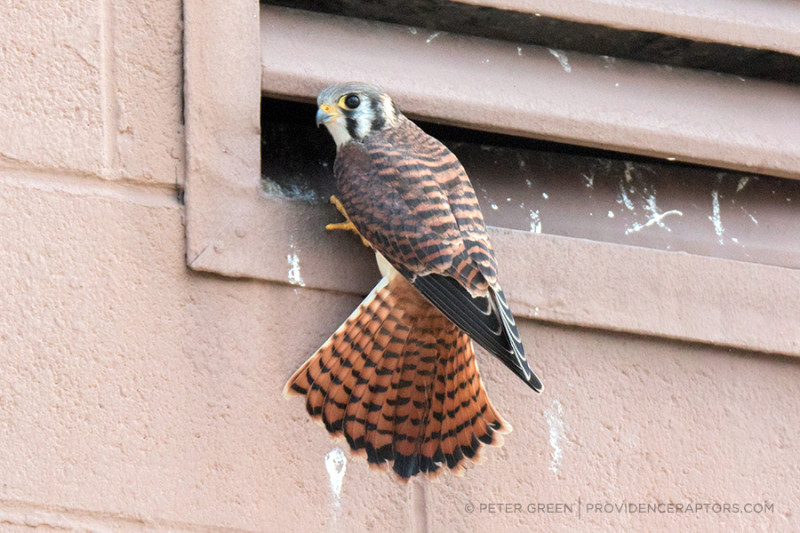
Below is dad – males have slate/blue wings and mostly red tails with a black stripe at the tip.
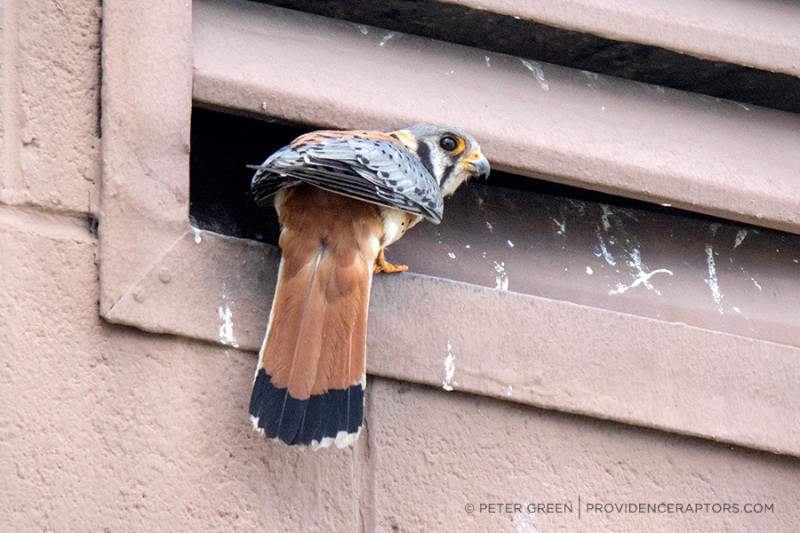
June 28: Mom (left) with 3 fledglings (two females and one male). Notice how mom’s chest feathers are disheveled, but the fledglings look brand new. Their behavior also indicated which one was the adult… mom was keeping a protective eye on the odd-looking human, and the fledglings were begging her for food.
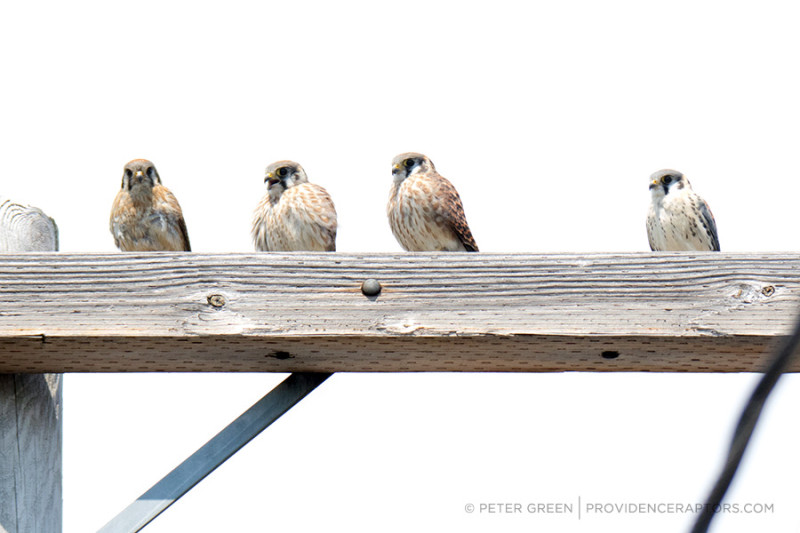
After feeding her three fledglings, the adult female flew directly into the vent (her nesting cavity) and stayed inside for 30 minutes before darting out. This behavior was unusual. Why would she do this when her nestlings had already fledged?! Perhaps another nestling was inside and would shortly exit too, so mom entered to feed it? Nope – she didn’t bring any food into the vent. Perhaps a prey species was inside and the kestrel was hunting? Nope – she never exited with food either.
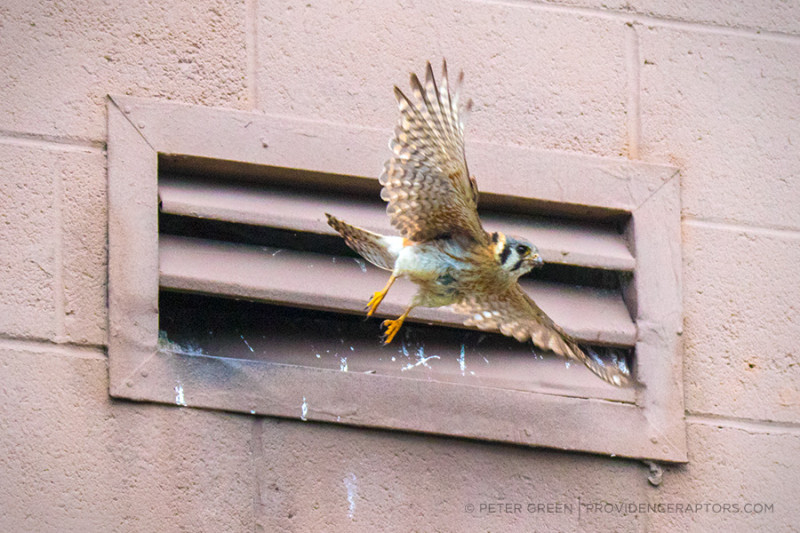
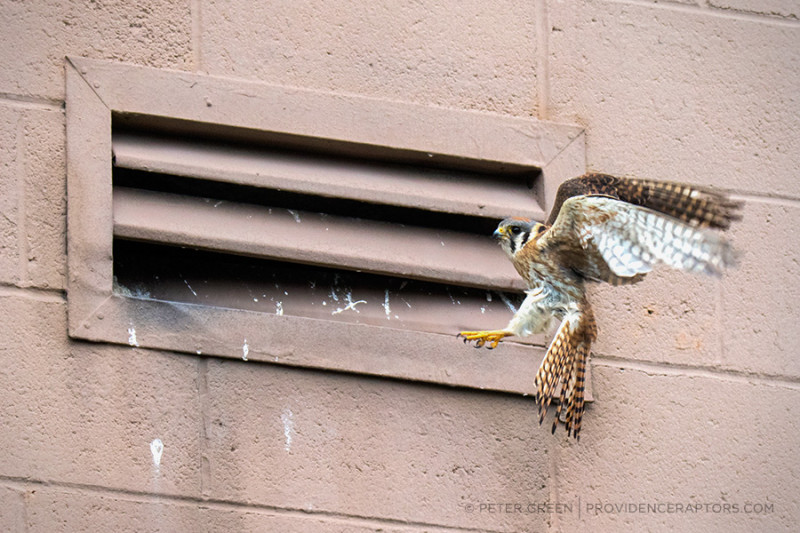
Her odd behavior continued for three weeks – still never entering nor exiting with food.
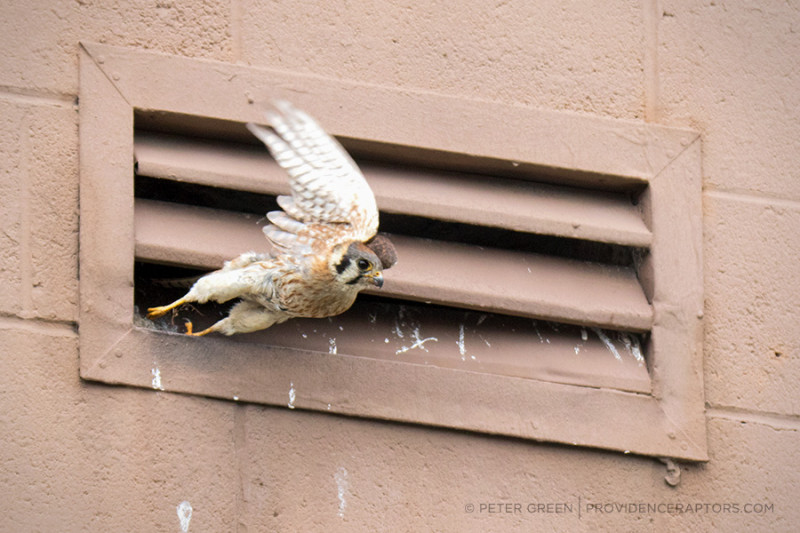
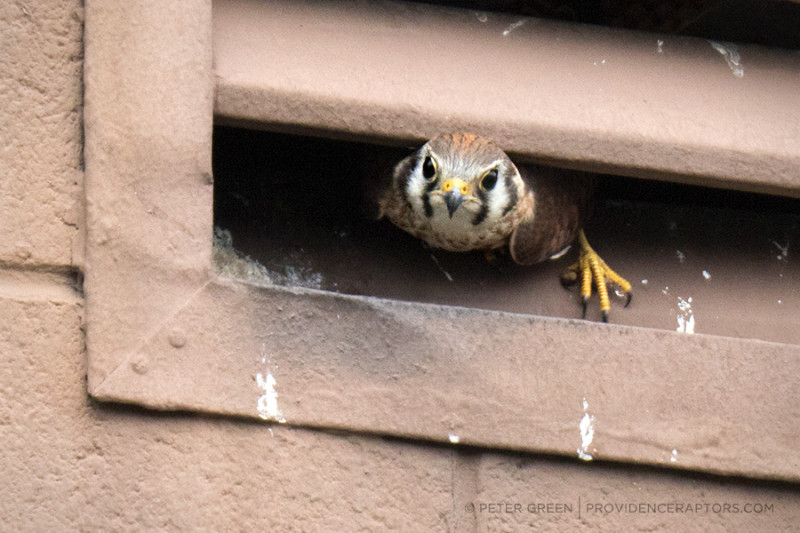
Another explanation was a second clutch of eggs inside the vent. Her disheveled chest feathers supported this theory. The male’s messy chest feathers also indicated he may be sharing in incubating duties. He too entered and exited without food.
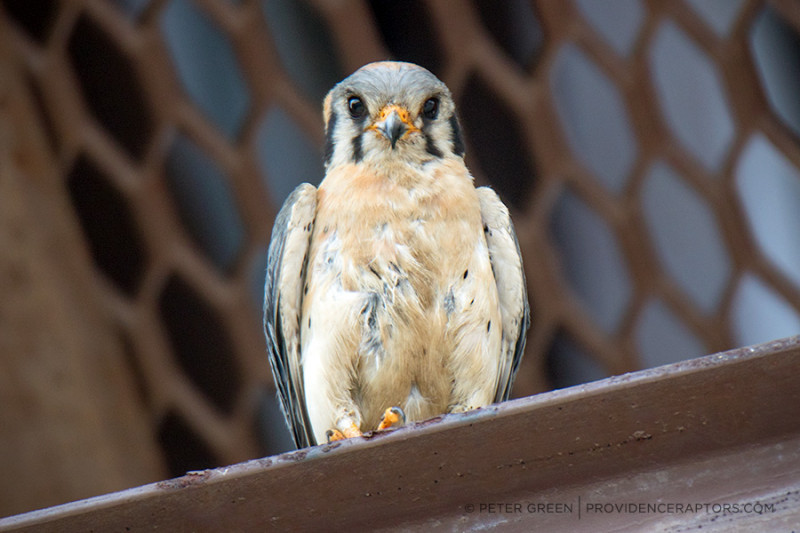
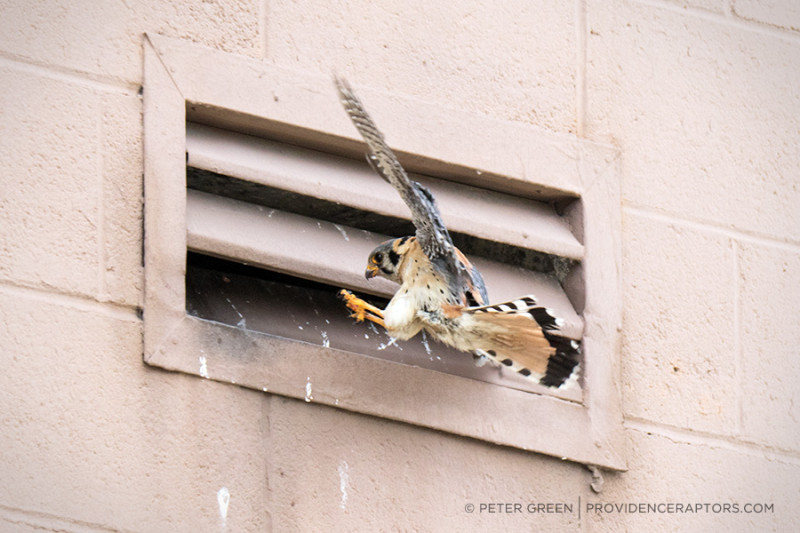
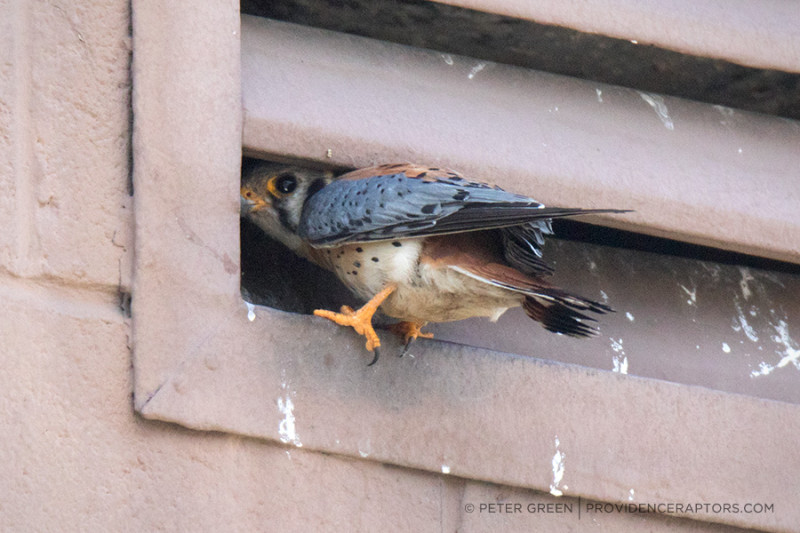
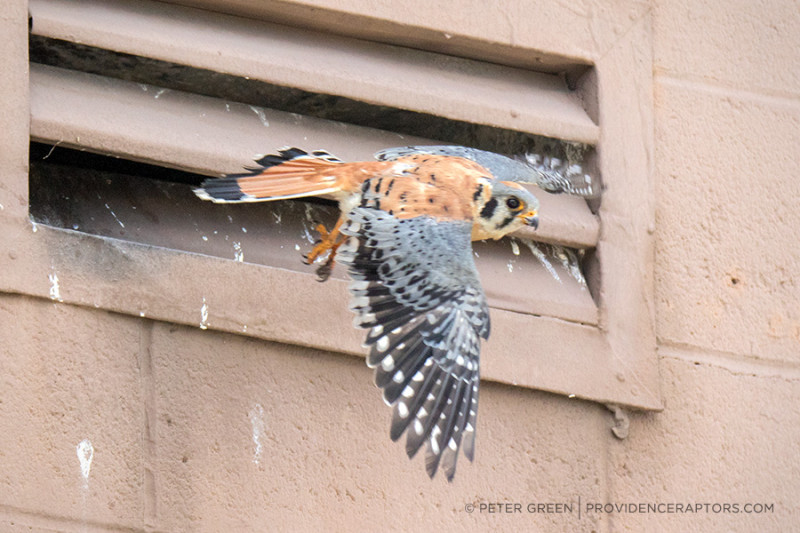
July 16: Double-brooding confirmed… beautiful nestlings inside the vent, only a few days old.
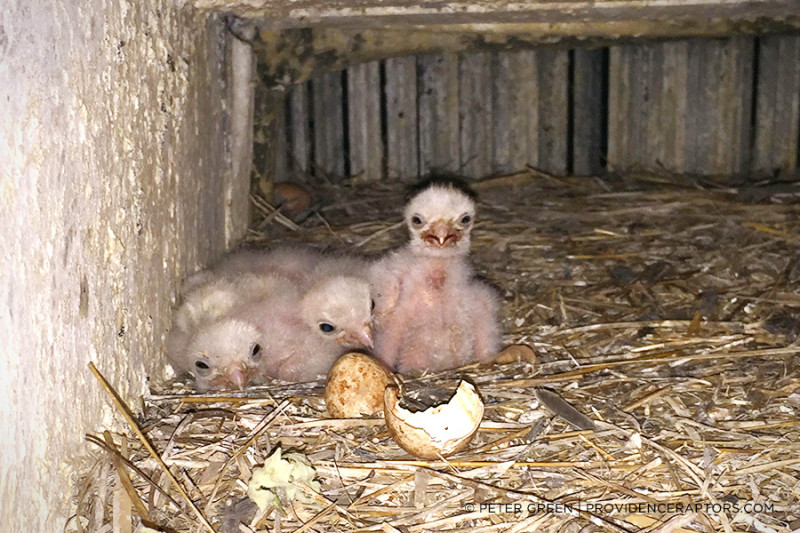
There were five in all, with one much smaller than the others – the “runt”.
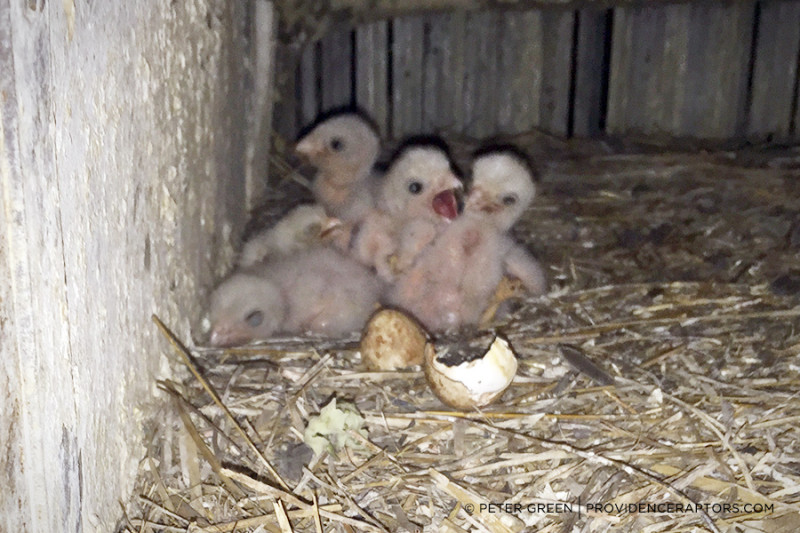
July 23: One week later, the “runt” sadly disappeared, but the four other nestlings looked bigger and healthy. Outside was the last sighting of a fledging from the first brood. The adults had likely stopped feeding them and now devoted all resources to the new nestlings. The first set of fledglings were now on their own.
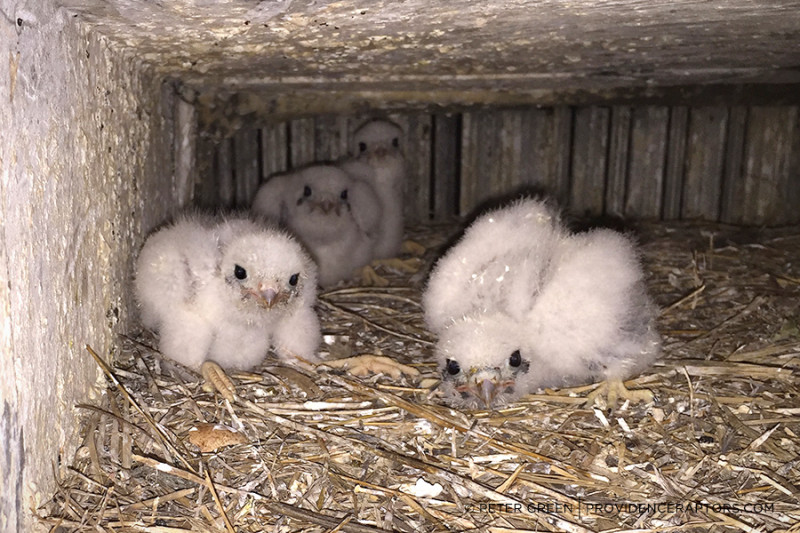
July 30: Flight feathers had started to appear and you could already tell their sexes – one female on the left with a reddish wing, and blue wings on the other three males.
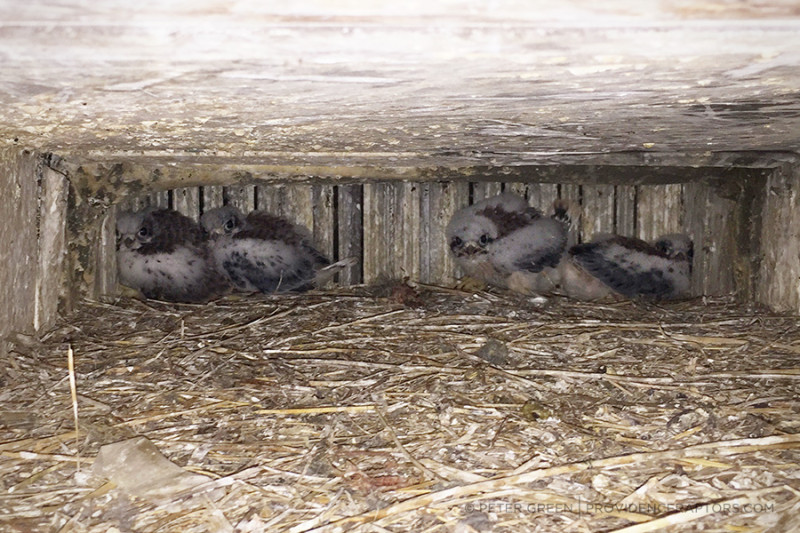
After these hatchlings appeared, both parents finally began to bring food into the vent. Usually the male would pass food to the female who would then enter the vent while he returned to hunting.
What did they eat? Everything! Many small rodents…
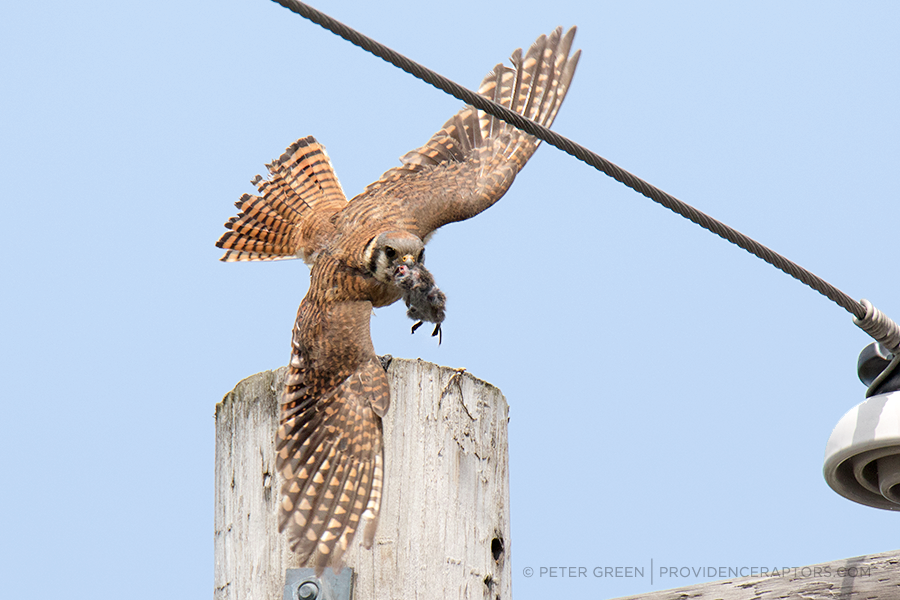
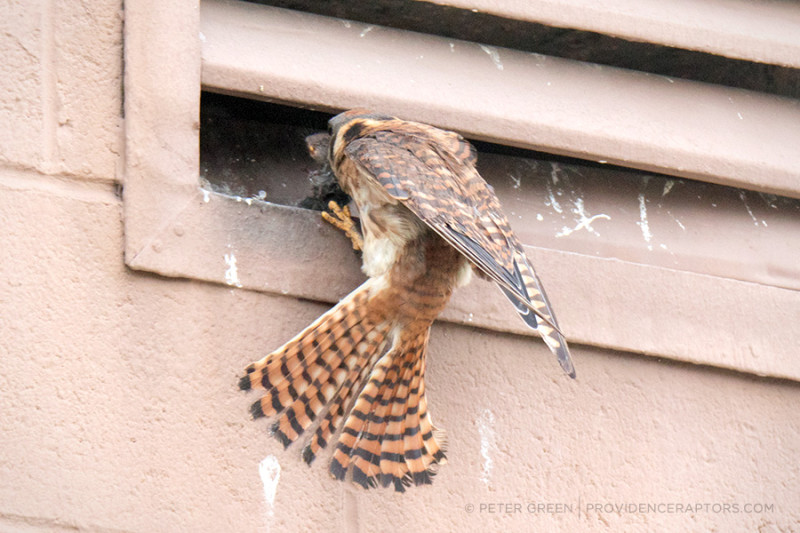
…dragonflies…
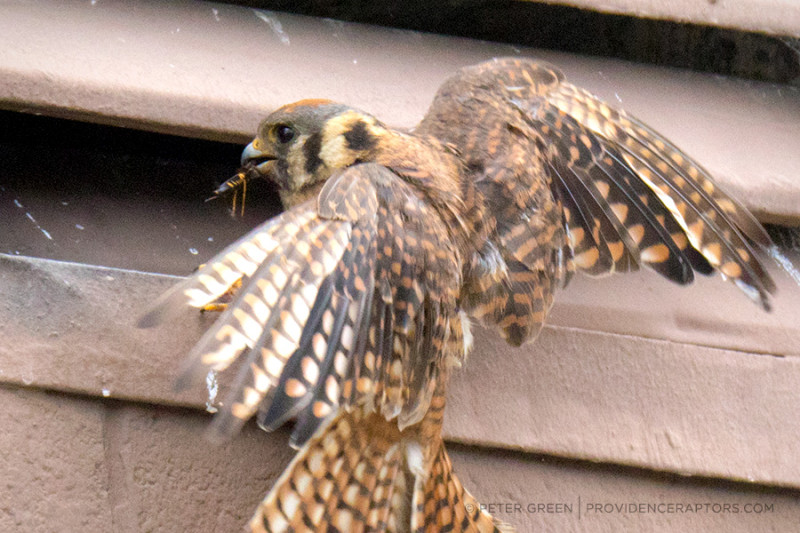
…tomato hornworms…
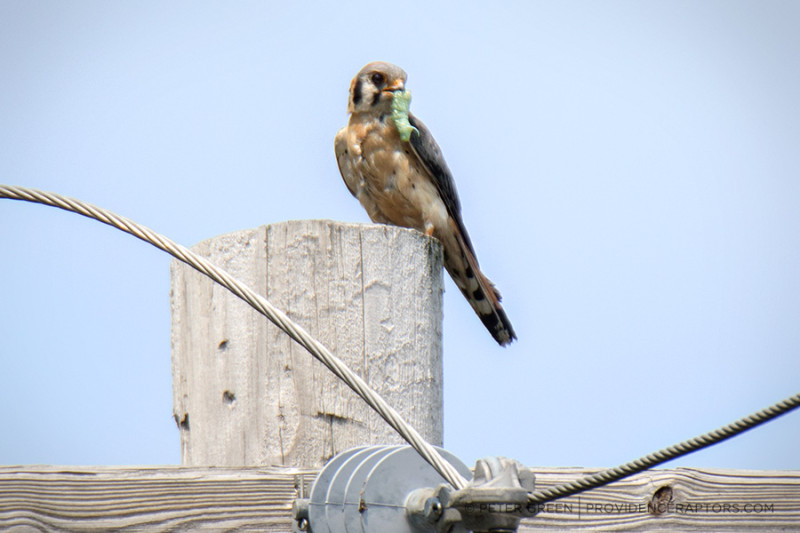
…and nestlings of House Sparrows, European Starlings and other small bird species.
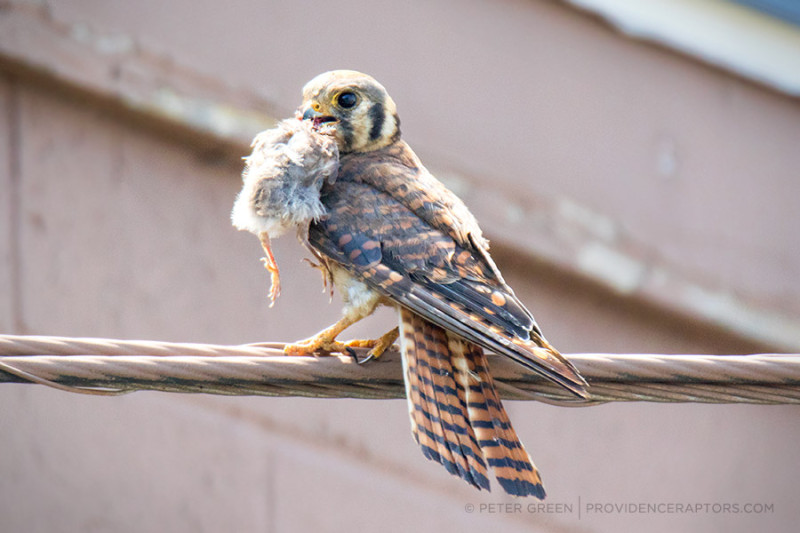
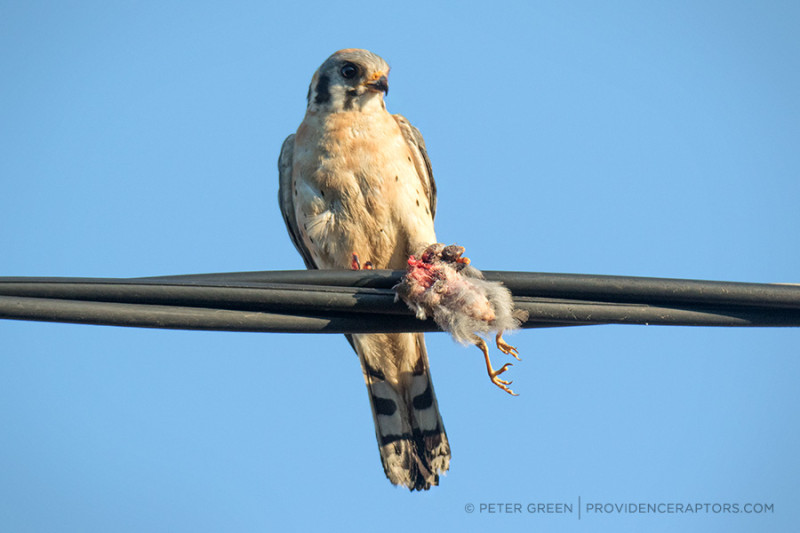
This Northern Mockingbird likely had its own nest hidden nearby and wasn’t happy to see a kestrel in the neighborhood.
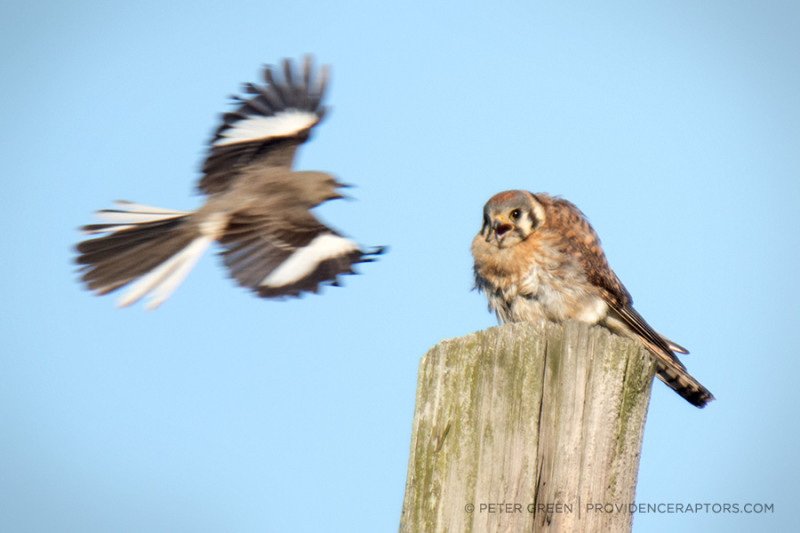
August 3: Four adorable little predators peering at the world outside
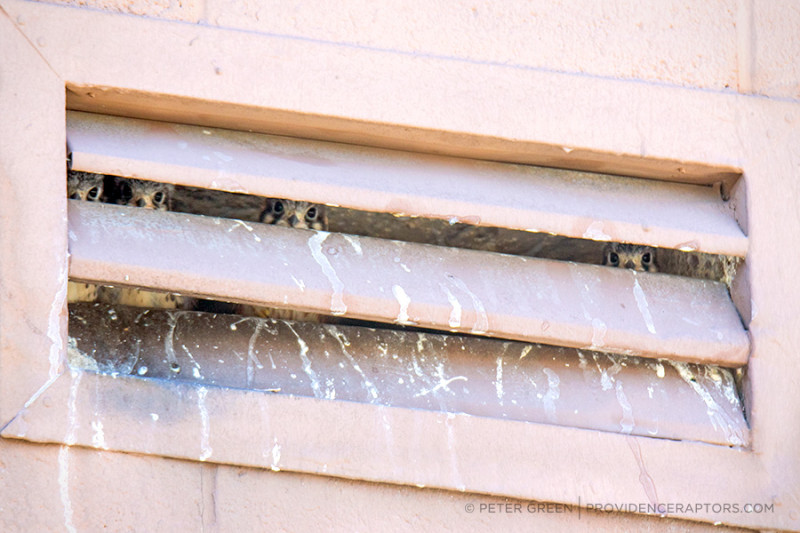
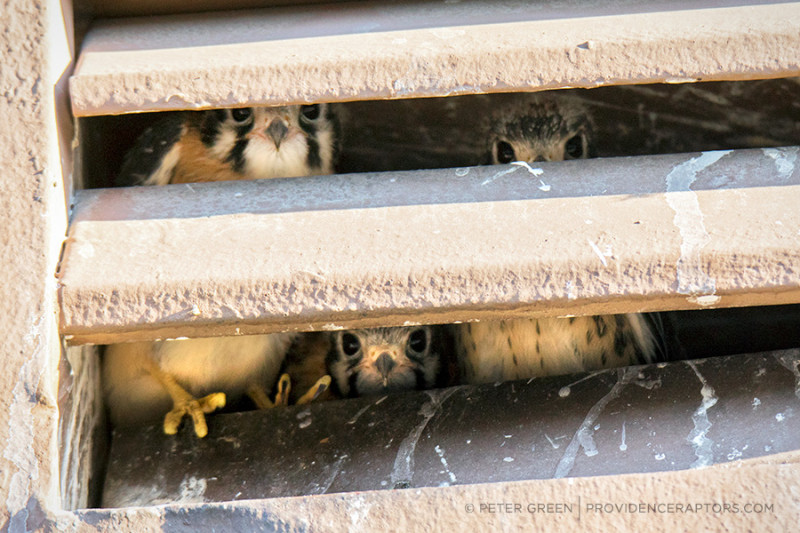
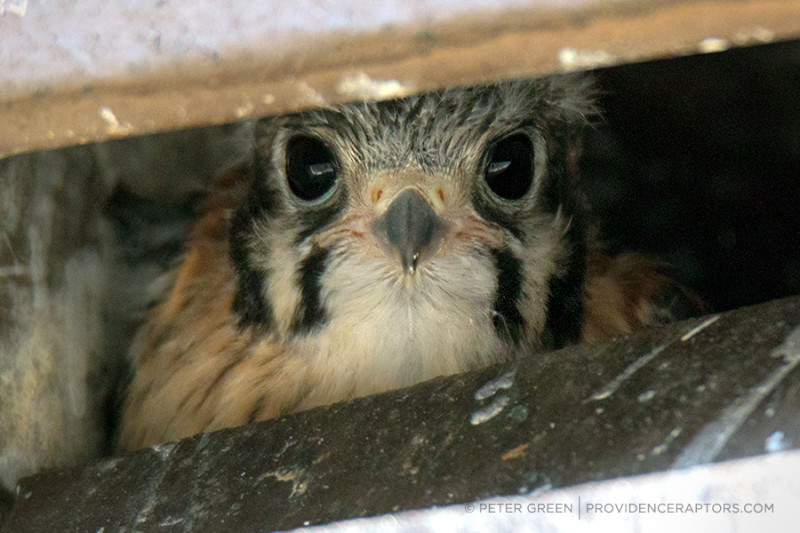
August 7: Almost ready to go…
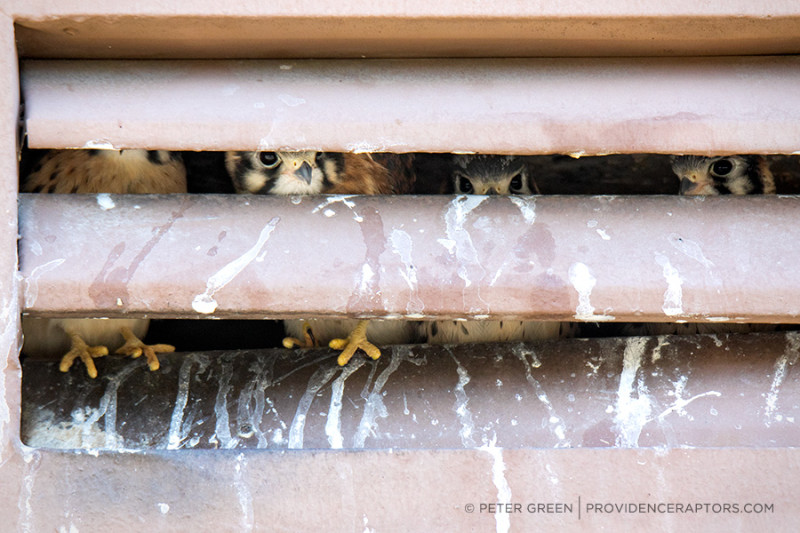
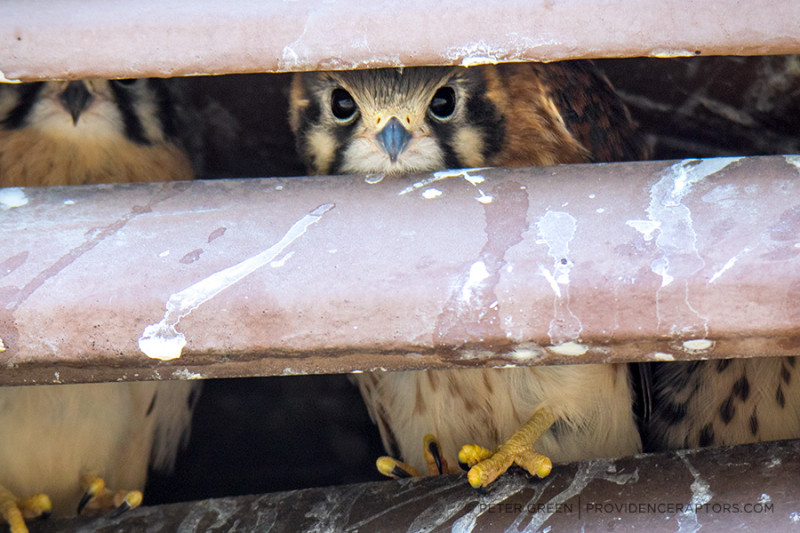
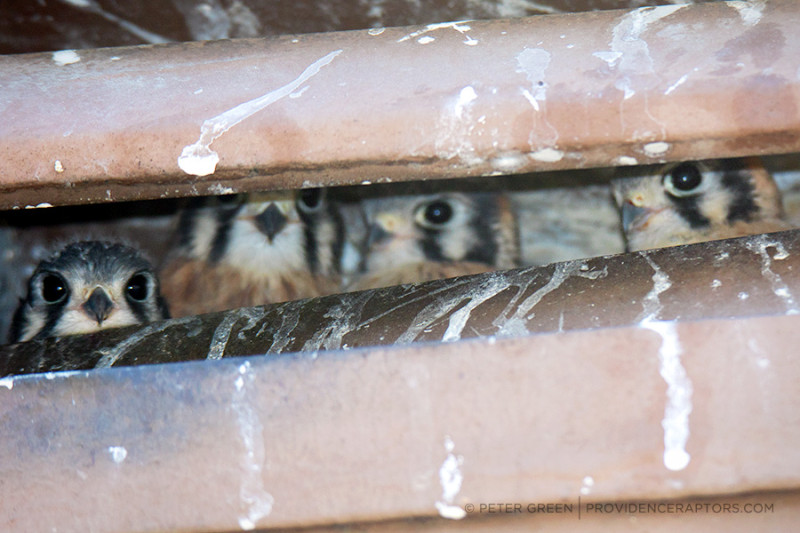
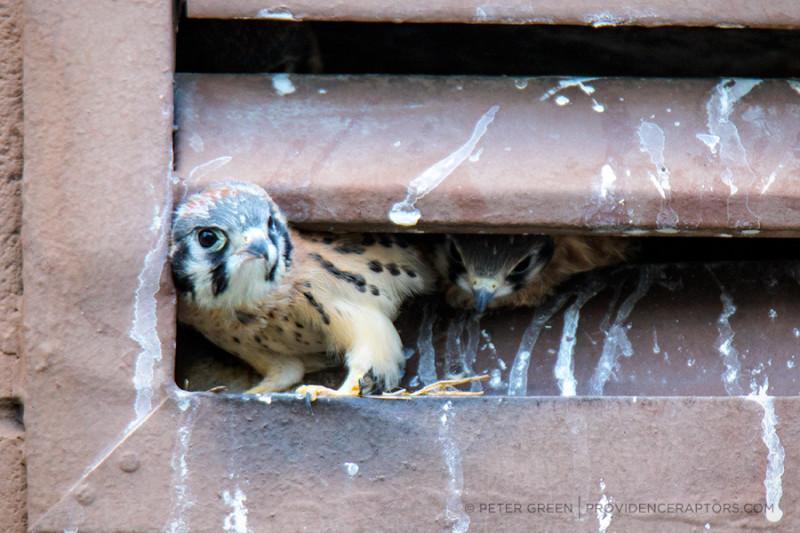
August 9: Two males were out – one was sleeping safely in a corner on the ground…
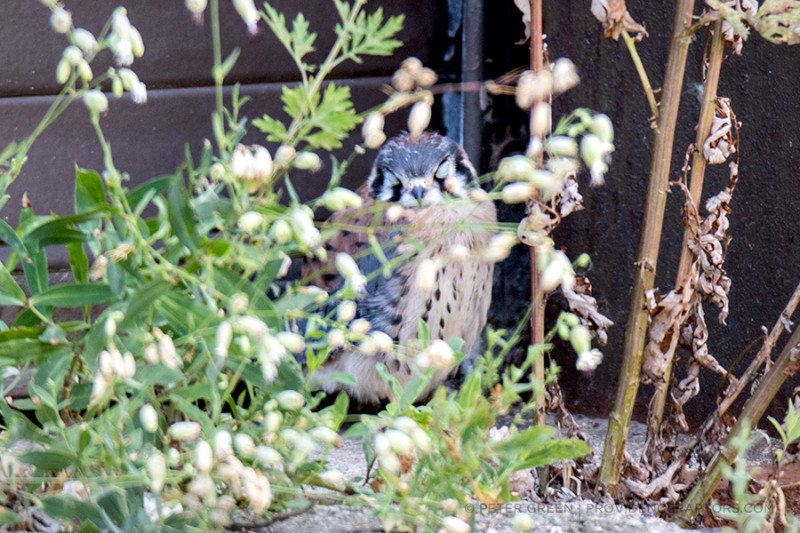
…and another found shelter under a table.
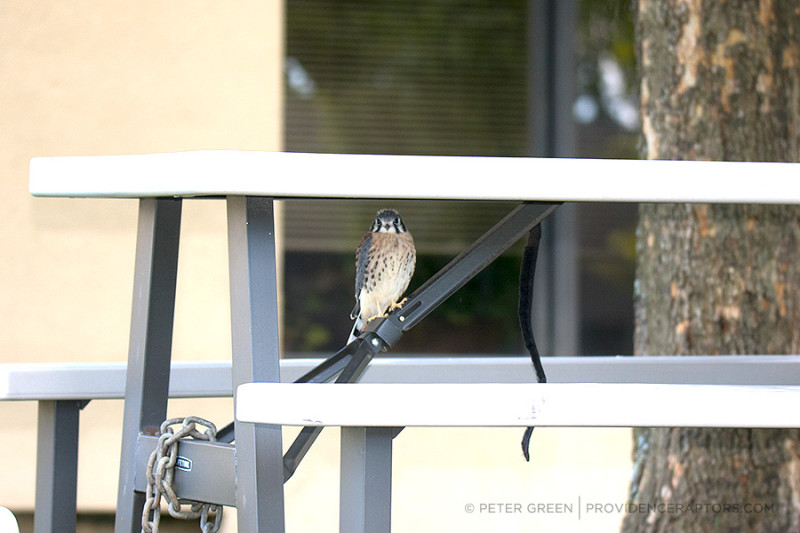
The adult male arrived with lunch, a tomato hornworm, and handed it off to this male fledgling.
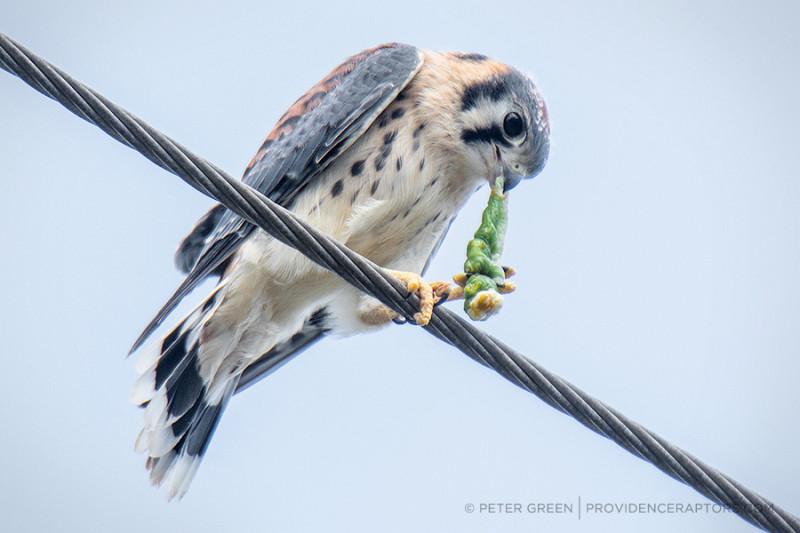
August 11: The final nestling became a fledgling and posed for portraits before flying up to the safety of the trees. The downy feathers remaining on his head will disappear in a week.
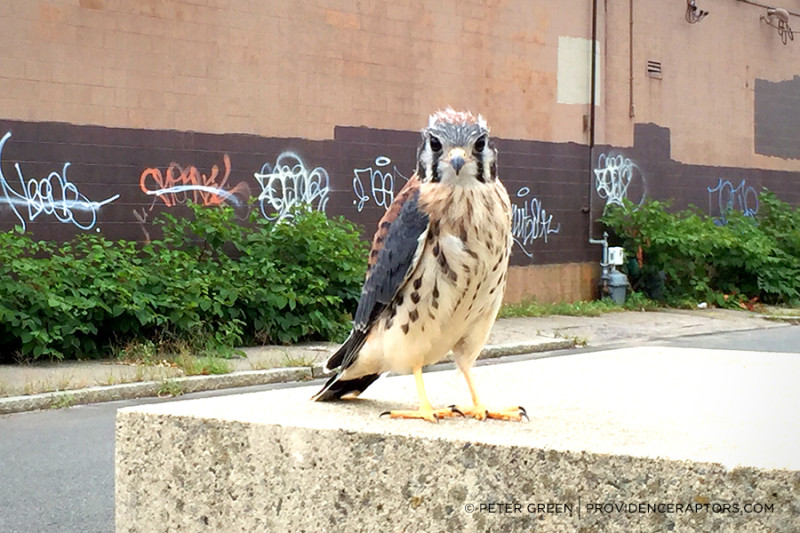
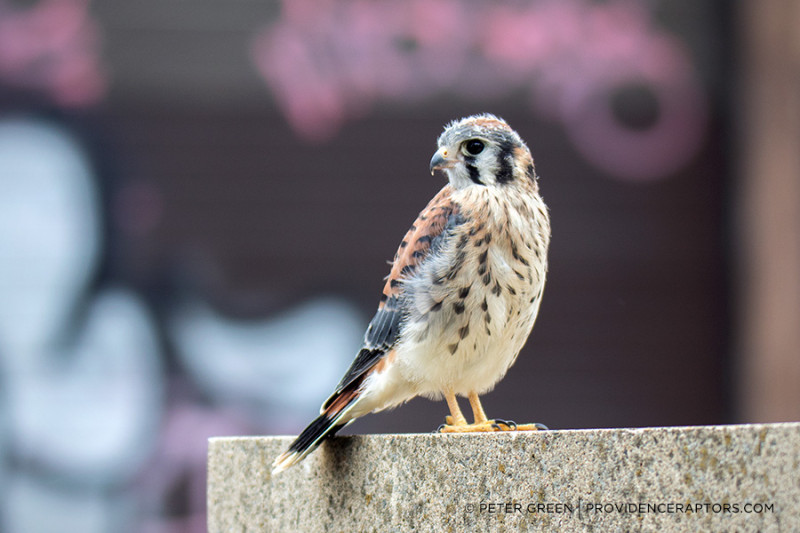
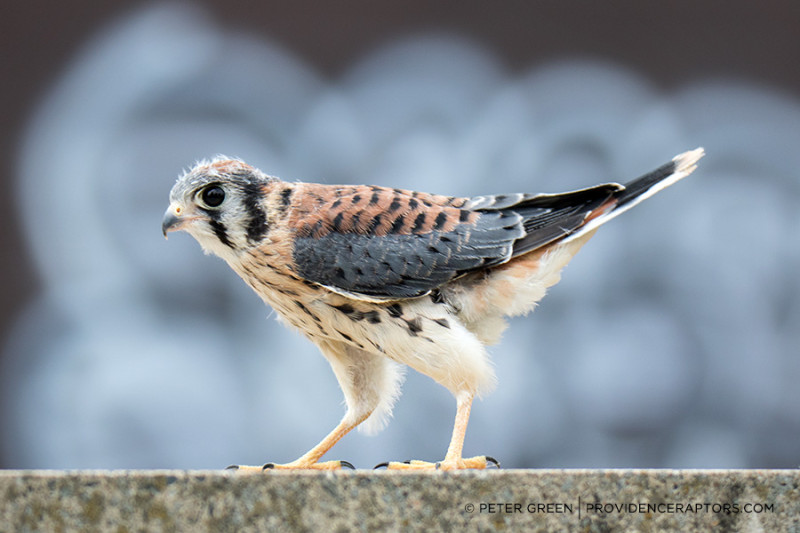
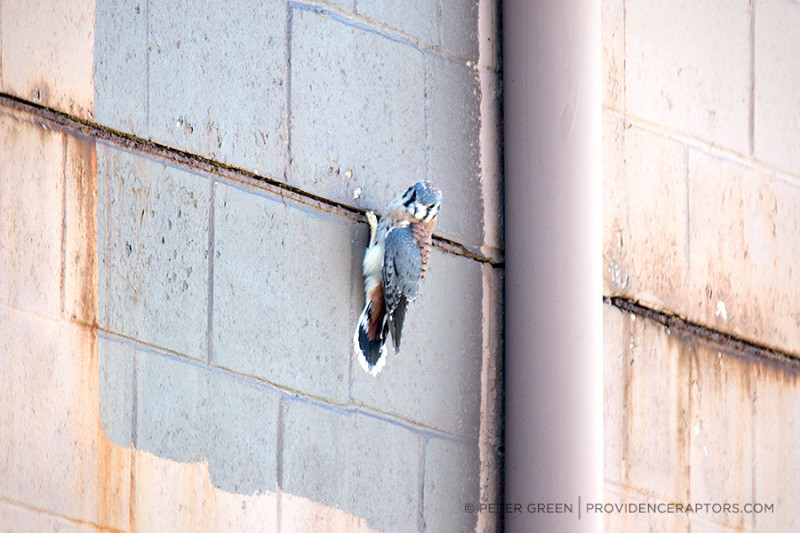
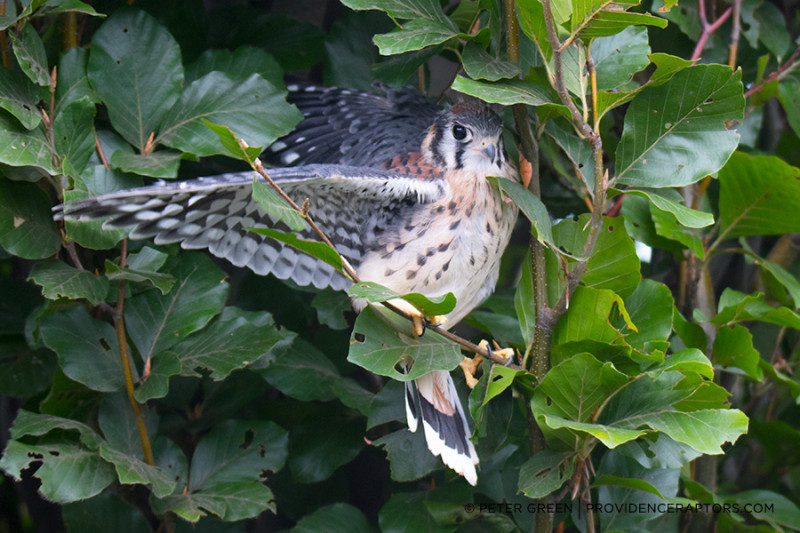
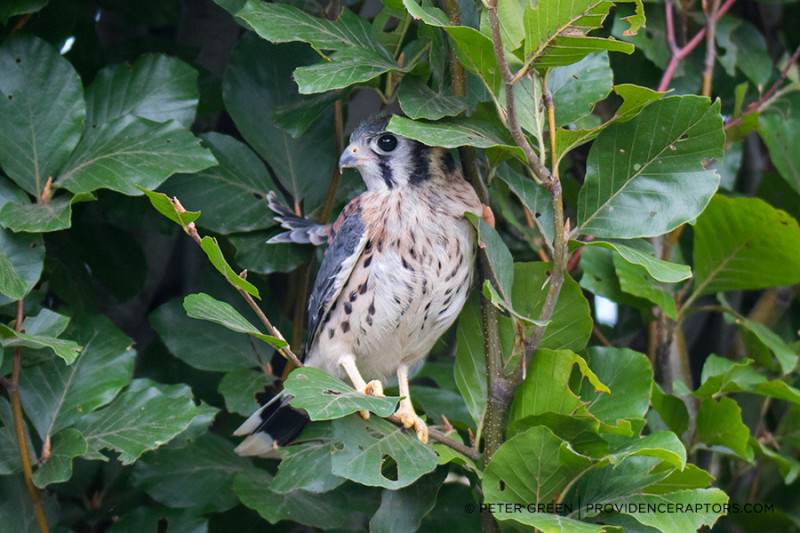
August 20: Final sighting of two fledglings, sister and brother. Soon they will migrate south for the winter.
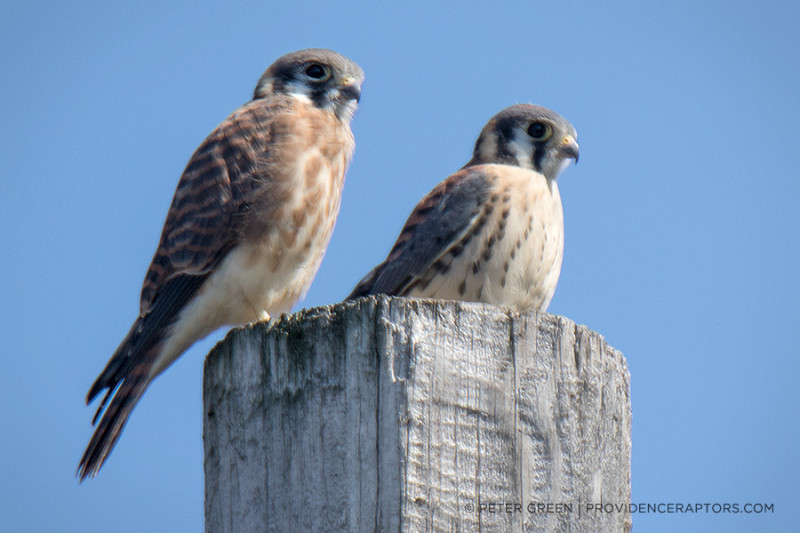
Godspeed, young kestrels!
You can help kestrels
Whether you live in the country, suburbs, or a city, you can easily buy/build and install a nest box to attract kestrels and help them thrive in the wild! The American Kestrel Partnership is a network of citizen and professional scientists working to collaboratively advance kestrel demographics and conservation.
– How you can become a citizen scientist
– Plans to build a kestrel nest box
– My photos of “urban kestrels” featured on the AKP website
Other documented double-brooding American Kestrels:
– Double Brooding by American Kestrels in Central Missouri, 1985
– Double Brooding by American Kestrels in Idaho, 1997
Kestrels in Providence from previous years:
– Kestrels outside my window and nest box installation, 2015
– Born To Be Wild: Kestrel release in Providence, 2013
– Flashy family of American Kestrels, 2011
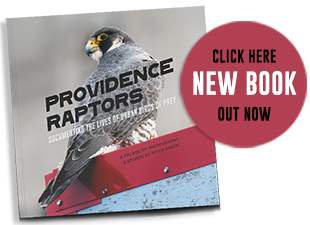
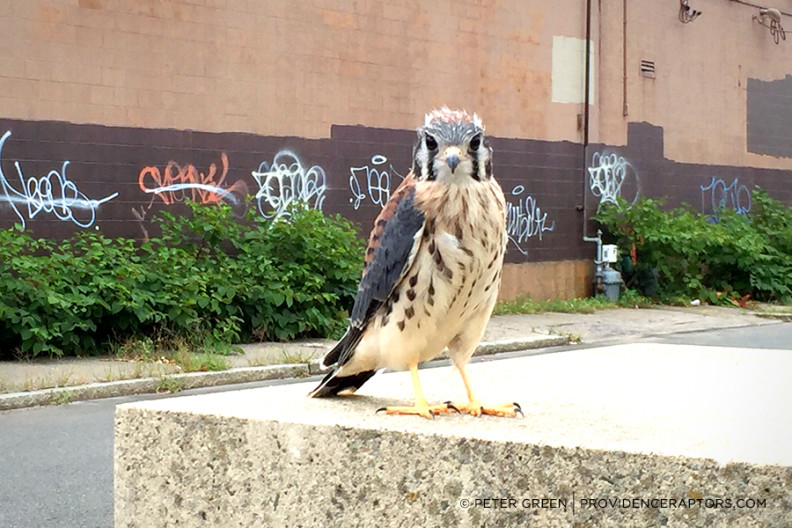
13 Comments
Yet another beautiful series!
Peter, this compilation is just superb!!! Great sequencing and the pictures (as usual) are over the top!! Congratulations from all of here at the Born To Be Wild Nature Center!!!
Thanks, Peter, for illustrating this “good news” story. The time you invested in observing and recording this succesful event, times two, brings a glimmer of hope for this declining population. Sue Stevenson
Simply, “Wow!!” Terrific job of giving us all a glimpse into the world of the urban kestrel! Great series! I hope they return next year so there can be more wonderful pictures and info and more new kestrels to add to the population!
Fantastic observations, photography, and story that you’ve superbly communicated here! Many thanks for your invaluable contribution to the American Kestrel Partnership and your continued commitment to kestrel conservation science. Thanks from all of us here at The Peregrine Fund!
Sarah Schulwitz, Assistant Director of the American Kestrel Partnership
kestrel.peregrinefund.org
Excellent observations and photography, you captured their lifecycle perfectly. It is great to see, in this case the Kestrels have adapted to urban life in the City in spite of all the challenges to survive, hunt for food, shelter and habitat. Great story!
Sue Stevenson forwarded your beautifully photographed story of this amazing pair. Kestrels are so beautiful. They have provided me with a thrill when I have been fortunate to see them.
Peter this series is amazing! You’ve captured the beauty and resilience of these powerful little falcons! Great work as usual!
hi peter beautify PICTURES OF THESE BIRDS I LOVE SEEING YOUR WORK REMEMBER ME EAST PROVIDENCE RESIDEND WHO LOVES BIRDS I HAVE A SMALL FEEDER ON MY WINDOWSILL AND GET ABOUT 30PLUS BIRDS A DAY WHO WILL EAT ME OUT OF MY HOME ALSO I HAVE A COCKATAIL ONE YEAR OLD I NAMES OLIVER BUT HAS LAID 47 EGGS OLIVIA IS HEALTHY AND LOVING BUT OH MY SINCERELY DOROTHY
love your photos – they are a true gift to all of us! thank you for supporting these beautiful creatures, the kestrels are my favorite!!
Peter,
Amazing, thanks.
I work w/the Tiverton Land Trust and we’re trying to get kestrels to nest at Pardon Gray Preserve. I’ve seen a female there maybe four times in 10 years. I plan on putting up a new nest box prior to next year’s breeding season although we’ve had one up for years in the middle of the main pasture w/no occupants ever. Wish I knew what was wrong with it.
-Chris Clarendon
Thanks Chris, I’ll reply to you directly.
I just came across your website! I loved all the photos and videos but particularly liked the kestrels. Thank you!